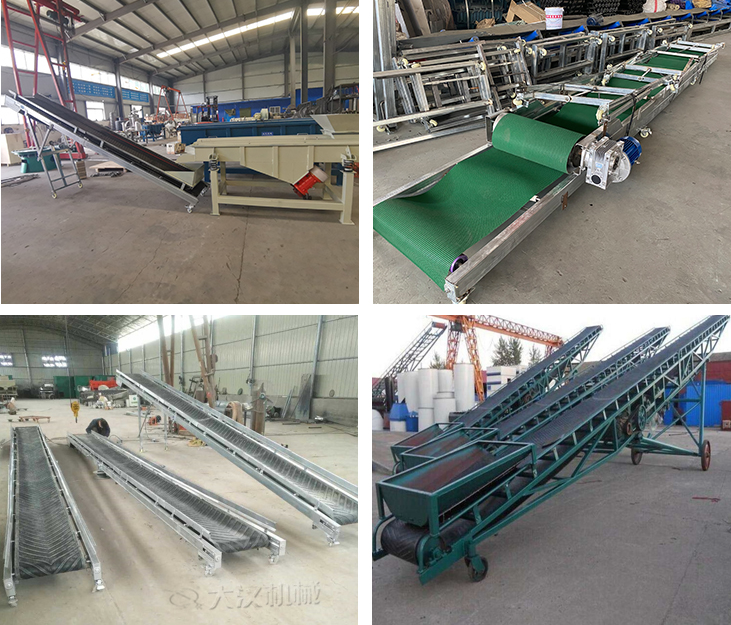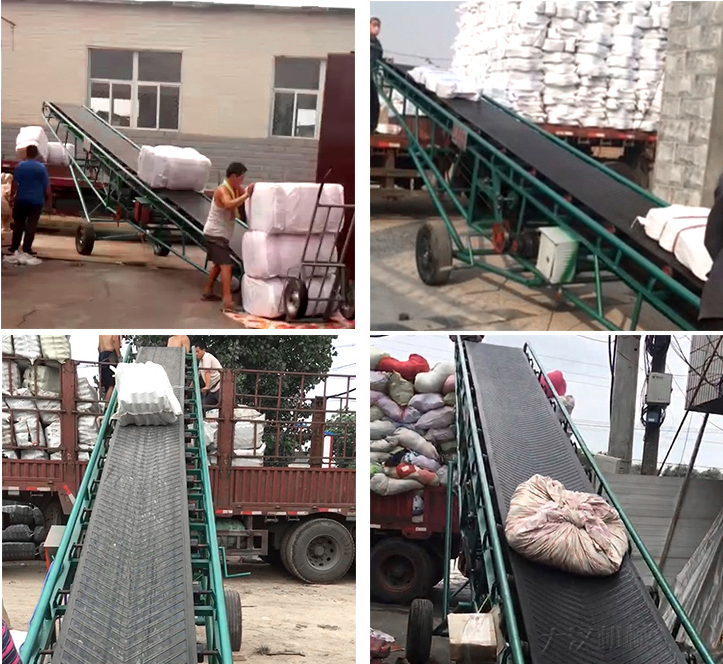
Belt conveyor for mineral powder is a type of conveyor system specifically designed for handling and transporting mineral powders. It is commonly used in industries such as mining, minerals processing, chemical processing, and pharmaceuticals. The belt conveyor consists of a continuous belt that moves over a series of pulleys or rollers, allowing the mineral powder to be conveyed from one location to another.
Belt conveyor for mineral powder is a type of conveyor system used to transport mineral powders, such as limestone, gypsum, talc, calcium carbonate, silica, and other finely ground materials. These conveyors are commonly employed in industries such as mining, minerals processing, chemical processing, and pharmaceuticals.

Mineral powder belt conveyors are suitable for various industries that need to process and transport mineral powder. Some common applications include:

Mining and Quarrying: Efficiently transport mineral fines, which may include materials such as coal, limestone, gypsum, phosphate and other minerals, from extraction sites to processing facilities or storage areas. Belt conveyors efficiently transport mineral fines from extraction sites to processing facilities or storage areas.
Mineral Processing: Used to convey powders to crushing, grinding, screening and sorting stages. Belt conveyors ensure a continuous flow of mineral powders between different processing equipment and facilitate efficient material handling.
Building materials: used to transport mineral powder used in the production of building materials. For example, powders such as cement, fly ash, silica and sand are conveyed from storage silos to mixing or batching equipment.
Foundries and Metal Production: For handling mineral powders used in various metal casting and forming processes. These powders may include materials such as sand, refractory powders and metal powders.
Conveying mineral fines with a belt conveyor offers several advantages in terms of efficiency, safety and productivity. Some key benefits include:
1. Improve productivity: It can realize the automation and integration of material handling process. They can be integrated into automation systems, allowing a seamless material flow between the different production stages. This integration reduces manual processing, simplifies workflow and increases overall productivity.
2. Dust control: Mineral powders can generate airborne dust, which poses health risks to workers and causes environmental problems. Belt conveyors designed for mineral powder handling typically feature dust containment measures such as housings, covers and dust extraction systems. These features help minimize dust emissions, create a cleaner work environment and improve air quality.
3. Gentle handling: Mineral powders are usually fragile and prone to degradation or particle size changes. Belt conveyors handle these materials gently, minimizing breakage and maintaining powder integrity. The smooth and controlled movement of the conveyor belt reduces the risk of material loss and ensures that the final product is of the desired quality.
4. Flexibility and scalability: Belt conveyors provide flexibility in layout configuration and can be easily adjusted or expanded as production requirements change. They can be designed as straight conveyors, curved conveyors or inclined/incline conveyors to suit the space constraints of your facility. This flexibility allows efficient use of available space and future expansion.
5. Cost savings: Reduced need for manual labor, minimized material loss, and optimized material flow for increased operational efficiency. Additionally, the automation and integration capabilities of belt conveyors contribute to overall cost savings by increasing productivity and reducing labor costs.
|
Belt width (mm) |
Conveying length(m) Power(kw) |
Conveying speed (m/s) |
Conveying amount (t/h) |
||
| B400 | ≤10 | 12-15 | 15-30 | 1.25-2.0 | 30-60 |
| 3 | 3-4 | 4-7.5 | |||
| B500 | ≤10 | 12-15 | 15-30 | 1.25-2.0 | 40-80 |
| 3 | 4-5.5 | 5.5-7.5 | |||
| B650 | ≤10 | 12-15 | 15-30 | 1.25-2.0 | 80-120 |
| 4 | 7.5 | 7.5-11 | |||
| B800 | ≤10 | 12-15 | 15-30 | 1.25-2.0 | 120-200 |
| 4 | 7.5 | 7.5-15 | |||
| B1000 | ≤10 | 10-20 | 20-40 | 1.25-2.0 | 200-320 |
| 5.5 | 7.5-11 | 11-22 | |||
| B1200 | ≤10 | 10-20 | 20-40 | 1.25-2.0 | 290-480 |
| 7.5 | 7.5-15 | 15-30 | |||
| B1400 | ≤10 | 10-20 | <20-40 | 1.25-2.0 | 400-680 |
| 11 | 15-22 | 22-45 | |||
| B1600 | ≤10 | 10-20 | <20-50 | 1.25-2.0 | 600-1080 |
| 15 | 22-30 | 30-75 | |||
| B1800 | ≤10 | 10-20 | <20-50 | 1.0-2.0 | 200-1500 |
| 18.5 | 30-45 | 45-110 | |||
| B2000 | ≤10 | 10-20 | <20-40 | 1.0-2.0 | 1000-2000 |
| 22 | 45-55 | 55-132 | |||
| B2400 | ≤10 | 10-20 | <20-40 | 1.0-2.0 | 1500-3000 |
| 30 | 55-75 | 75-185 | |||
Belt conveyors for mineral powder are designed to handle the specific characteristics of the powder, such as particle size, density, flowability, and abrasiveness. They are often customized to meet the requirements of the application, considering factors such as the desired throughput, distance of transportation, and environmental conditions. Proper maintenance and periodic inspections are essential to ensure the reliable and efficient operation of the belt conveyor for mineral powder.
Mineral fines belt conveyors can be integrated into automation systems through various methods and technologies. Here are some ways to integrate belt conveyors into automation systems:
1. Control system integration: The belt conveyor can be connected to a centralized control system that manages the entire automation process. The control system can receive input from various sensors and interact with other equipment in the production line. It can be programmed to control conveyor speed, start/stop and direction according to production requirements and material flow.
Variable Speed Drive: The belt conveyor can be equipped with a variable speed drive (VSD) for precise control of the conveyor 2. Material flow control: In an automated system, the belt conveyor can be or packaging machines) to ensure a smooth and continuous material flow. Interlocks and control signals are available to coordinate the operation of the conveyor with upstream and downstream processes. This integration minimizes bottlenecks, optimizes production efficiency, and reduces human intervention.

Address:China,Yanjin county forest park gate to the west 1000 meters north road.